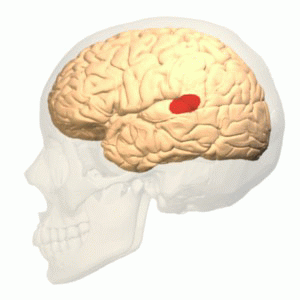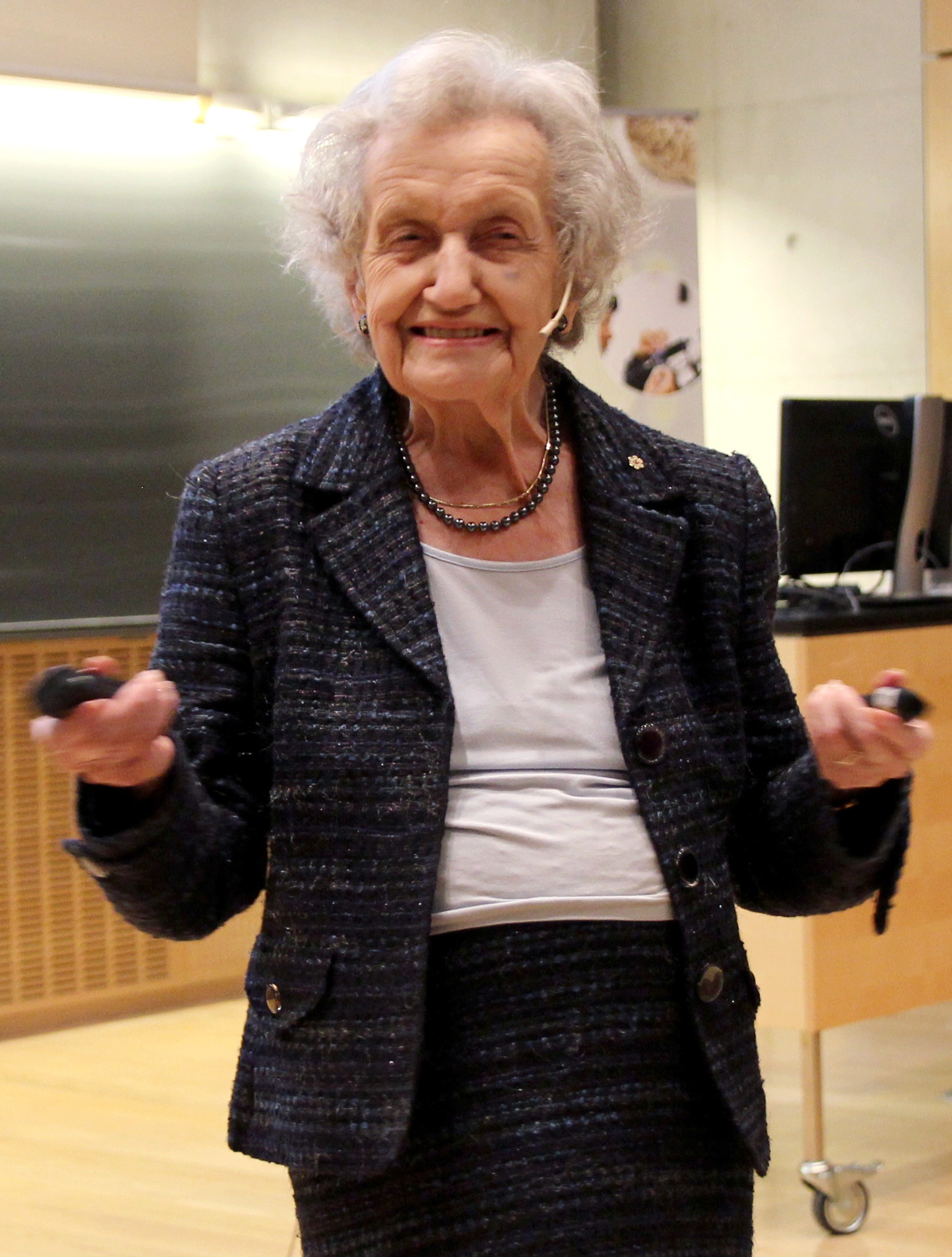|
Cognitive Neuropsychology
Cognitive neuropsychology is a branch of cognitive psychology that aims to understand how the structure and function of the brain relates to specific psychological processes. Cognitive psychology is the science that looks at how mental processes are responsible for our cognitive abilities to store and produce new memories, produce language, recognize people and objects, as well as our ability to reason and problem solve. Cognitive neuropsychology places a particular emphasis on studying the cognitive effects of acquired brain injury, brain injury or neurological illness with a view to inferring models of normal cognitive functioning. Evidence is based on case studies of individual brain damaged patients who show deficits in brain areas and from patients who exhibit double dissociations. Double dissociations involve two patients and two tasks. One patient is impaired at one task but normal on the other, while the other patient is normal on the first task and impaired on the other. ... [...More Info...] [...Related Items...] OR: [Wikipedia] [Google] [Baidu] |
Cognitive Psychology
Cognitive psychology is the scientific study of mental processes such as attention, language use, memory, perception, problem solving, creativity, and reasoning. Cognitive psychology originated in the 1960s in a break from behaviorism, which held from the 1920s to 1950s that unobservable mental processes were outside the realm of empirical science. This break came as researchers in linguistics and cybernetics, as well as applied psychology, used models of mental processing to explain human behavior. Work derived from cognitive psychology was integrated into other branches of psychology and various other modern disciplines like cognitive science, linguistics, and economics. The domain of cognitive psychology overlaps with that of cognitive science, which takes a more interdisciplinary approach and includes studies of non-human subjects and artificial intelligence. History Philosophically, ruminations on the human mind and its processes have been around since the times of the a ... [...More Info...] [...Related Items...] OR: [Wikipedia] [Google] [Baidu] |
Karl Wernicke
Carl (or Karl) Wernicke (; ; 15 May 1848 – 15 June 1905) was a German physician, anatomist, psychiatrist and neuropathologist. He is known for his influential research into the pathological effects of specific forms of encephalopathy and also the study of receptive aphasia, both of which are commonly associated with Wernicke's name and referred to as Wernicke encephalopathy and Wernicke's aphasia, respectively. His research, along with that of Paul Broca, led to groundbreaking realizations of the localization of brain function, specifically in speech. As such, Wernicke's area (a.k.a. Wernicke's Speech Area) has been named after the scientist. Biography Wernicke was born on May 15, 1848, in Tarnowitz, a small town in Upper Silesia, Prussia, now Tarnowskie Góry, Poland. He obtained his secondary education at the gymnasium in Oppeln, which is a school near the university of Breslau. Wernicke then studied medicine at the University of Breslau and did graduate work studying lan ... [...More Info...] [...Related Items...] OR: [Wikipedia] [Google] [Baidu] |
Tim Shallice
Timothy Shallice (born 1940) is a professor of neuropsychology and the founding director of the Institute of Cognitive Neuroscience, part of University College London. He has been a professor at Cognitive Neuroscience Sector of the International School for Advanced Studies (SISSA) in Trieste, Italy since 1994. Shallice has been influential in laying the foundations for the discipline of cognitive neuropsychology, by formalising many of its methods and assumptions in his 1988 book ''From Neuropsychology to Mental Structure''. He has also worked on many core problems in cognitive psychology and neuropsychology, including executive function, language and memory. Together with psychologist Don Norman, Shallice proposed a framework of attentional control of executive functioning. One of the components of the Norman-Shallice model is the supervisory attentional system. The model is viewed as a possible realization of Alexander Luria's theory in information-processing terms. Together wi ... [...More Info...] [...Related Items...] OR: [Wikipedia] [Google] [Baidu] |
Brenda Milner
Brenda Milner (née Langford; July 15, 1918) is a British-Canadian neuropsychologist who has contributed extensively to the research literature on various topics in the field of clinical neuropsychology. Milner is a professor in the Department of Neurology and Neurosurgery at McGill University and a professor of Psychology at the Montreal Neurological Institute.Brenda Milner Wins Balzan Prize for Cognitive Neurosciences (2011). Government of Canada. , she holds more than 25 honorary degrees and she continued to work in her nineties. Her current work covers many aspects of neuropsychology including her lifelong interest in the involvement of the temporal lob ... [...More Info...] [...Related Items...] OR: [Wikipedia] [Google] [Baidu] |
Elizabeth Warrington
Elizabeth Kerr Warrington FRS (born 1931) is a British neuropsychologist specialised in the study of dementia. She holds a PhD in Psychology visual processing and is now an emeritus professor of clinical neuropsychology at the University College London. She formerly worked as the Head of the Department of Neuropsychology at the National Hospital for Neurology and Neurosurgery where she is also a member of the Dementia Research Centre. She was made a Fellow of the Royal Society in 1986. Biography Warrington received her PhD in psychology (visual processing) from the University College London in the 1950s. She worked as the Head of Department of Neuropsychology at the National Hospital for Neurology and Neurosurgery in London, England. As of June 2015, she is an emeritus professor of clinical neuropsychology for the University College London, specifically in the UCL Institute of Neurology. She is a member of the Dementia Research Centre associated with University College ... [...More Info...] [...Related Items...] OR: [Wikipedia] [Google] [Baidu] |
Behaviorism
Behaviorism is a systematic approach to understanding the behavior of humans and animals. It assumes that behavior is either a reflex evoked by the pairing of certain antecedent (behavioral psychology), antecedent stimuli in the environment, or a consequence of that individual's history, including especially reinforcement (psychology), reinforcement and punishment (psychology), punishment three-term contingency, contingencies, together with the individual's current motivating operation, motivational state and Stimulus control, controlling stimuli. Although behaviorists generally accept the important role of heredity in determining behavior, they focus primarily on environmental events. Behaviorism emerged in the early 1900s as a reaction to depth psychology and other traditional forms of psychology, which often had difficulty making predictions that could be tested experimentally, but derived from earlier research in the late nineteenth century, such as when Edward Thorndike p ... [...More Info...] [...Related Items...] OR: [Wikipedia] [Google] [Baidu] |
Norman Geschwind
Norman Geschwind (January 8, 1926 – November 4, 1984) was a pioneering American Behavioral neurology, behavioral neurologist, best known for his exploration of behavioral neurology through disconnection models based on lesion analysis. Early life Norman Geschwind was born on January 8, 1926, in New York City, New York to a Jewish family. He was a student at Boy's High School in Brooklyn, New York. He matriculated into Harvard University in 1942, initially planning to study mathematics. His education was interrupted when drafted into the Army in 1944. After serving for two years, he returned to Harvard University in 1946. Geschwind changed to the Department of Social Relations and studied a combination of social/personality psychology and cultural anthropology. Geschwind later married and had three children, Naomi, David, and Claudia. Medical education and training Geschwind attended Harvard Medical School, intending to become a psychiatrist. His emphasis began to shift after ... [...More Info...] [...Related Items...] OR: [Wikipedia] [Google] [Baidu] |
Henry Head
Sir Henry Head, FRS (4 August 1861 – 8 October 1940) was an English neurologist who conducted pioneering work into the somatosensory system and sensory nerves. Much of this work was conducted on himself, in collaboration with the psychiatrist W. H. R. Rivers, by severing and reconnecting sensory nerves and mapping how sensation returned over time. Head-Holmes syndrome and Head-Riddoch syndrome are named after him. Biography Early life Henry Head was born on 4 August 1861 at number 6, Park Road, Stoke Newington (a district in the London Borough of Hackney), as the eldest son of Henry Head and his wife Hester Beck and one of eleven children. 'Harry', as he was called throughout his childhood, was of strong Quaker roots and Head once described his parents as being "the centre of a multitude of friends and relations." Head's father was an insurance broker for Lloyd's Bank and the third son of Jeremiah Head, formerly the Mayor of Ipswich, and Mary Howard. His mother was the da ... [...More Info...] [...Related Items...] OR: [Wikipedia] [Google] [Baidu] |
Pierre Marie
Pierre Marie (9 September 1853 – 13 April 1940) was a French neurologist and political journalist close to the SFIO. Medical Career After finishing medical school, he served as an interne (1878), working as an assistant to neurologist Jean-Martin Charcot (1825–1893) at the Salpêtrière and Bicêtre Hospitals in Paris. In 1883 he received his medical doctorate with a graduate thesis on Basedow’s disease, being promoted to ''médecin des hôpitaux'' several years later (1888). In 1907 he attained the chair of pathological anatomy at the Faculty of Medicine, and in 1917 was appointed to the chair of neurology, a position he held until 1925. In 1911 Marie became a member of the ''Académie de Médecine''. One of Marie's earlier contributions was a description of a disorder of the pituitary gland known as acromegaly. His analysis of the disease was an important contribution in the emerging field of endocrinology. Marie is also credited as the first to describe pulmonary hy ... [...More Info...] [...Related Items...] OR: [Wikipedia] [Google] [Baidu] |
Lewandowsky
Lewandowski (; feminine Lewandowska, plural Lewandowscy) is a Polish-language surname. In other languages it may be transliterated as Lewandowsky, Levandovski, Levandovsky, Levandovskyy, Levandoski, Levandovskiy. It is the seventh most common surname in Poland (93,404 people in 2009). It is derived from the place name ''Lewandów'', itself derived from the Old Polish word ''lewanda'' – 'lavender' (''lawenda'' in modern Polish). It is most frequent in mid-northern Poland, making up as much as 1.1% of the Kuyavian-Pomeranian Voivodeship's population (the record of Poland). The surname was recorded for the first time in 1673, although ''Lavendowski'', which is probably its variant, is known since 1608. People Lewandowski * Adolph J. Lewandowski (1905–1961), American football and basketball coach * Corey Lewandowski (born 1973), American political consultant * Edmund Lewandowski (1914–1998), American artist * Eduard Lewandowski (born 1980), German ice hockey player * G ... [...More Info...] [...Related Items...] OR: [Wikipedia] [Google] [Baidu] |
Lissauer
Lissauer is a German surname. Notable people with the surname include: * Abraham Lissauer (1832–1908), Polish-German physician and archaeologist * Ernst Lissauer (1882–1937), German poet and dramatist *Heinrich Lissauer (1861–1891), Prussian-German neurologist * Jack J. Lissauer, American research scientist * Robert Lissauer (1917–2004), American composer, author, and musicologist *Trevor Lissauer (born 1973), American actor and musician * Walter Lissauer (1882–1965), German-American member of the Early Birds of Aviation Gallery The Early Birds of Aviation is an organization devoted to the history of early pilots. The organization was started in 1928 and accepted a membership of 598 pioneering aviators. Membership was limited to ... * Woody Lissauer (born 1959), musician and producer best known for his work with the band Cubic Feet {{surname, Lissauer German-language surnames ... [...More Info...] [...Related Items...] OR: [Wikipedia] [Google] [Baidu] |

